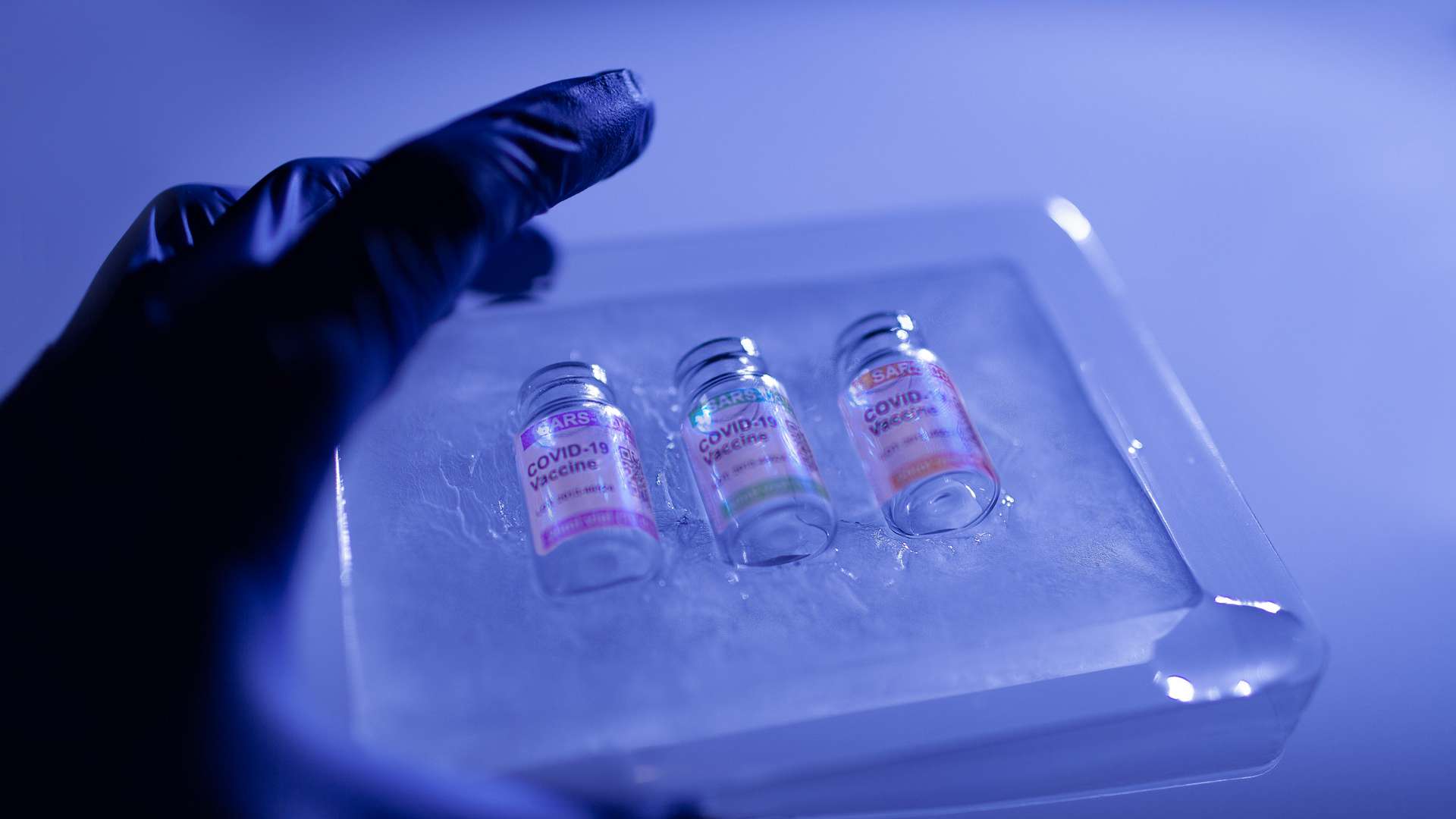Freeze-drying – The answer to pharma’s supply chain challenges?
Freeze drying can stabilise pharmaceutical products to maintain quality and help solve major supply chain issues within the pharmaceutical industry.

Team Leader – Formulation & Fill Finish

Freeze drying can stabilise pharmaceutical products to maintain quality and help solve major supply chain issues within the pharmaceutical industry.
Ensuring the stability and safety of pharmaceutical products before they reach a patient is vital. However, some therapeutic molecules are inherently unstable and begin to break down when they are left in a solution for an extended period of time. For instance, the inherently unstable mRNA molecules in COVID-19 vaccines must be stored at low temperatures to maintain their shelf-life and effectiveness (e.g., ‑80°C freezers). Once thawed, these vaccines cannot be re-frozen and must be used within a few hours before their components denature.
Freeze Drying: A Solution
Freeze drying has been widely adopted across the pharmaceutical industry to stabilise pharmaceutical products such as vaccines, monoclonal antibodies (mAbs), bacterial cells and antibiotics. This process removes the water in a solution, which reduces the likelihood of hydrolysis – the chemical breakdown of a product due to a reaction with water. The main benefit of freeze drying in the pharmaceutical industry is that it allows products to become more stable, dramatically increasing their shelf-life and enabling them to remain stable when stored at room temperature or in conventional refrigerators and freezers (4 to ‑18°C). This is particularly important for products that need to be delivered to warm countries without an established cold chain or sufficient ultra-cold storage (e.g., ‑80°C freezers).
Freeze drying is also more stable when compared to more aggressive drying methods such as spray drying. Spray drying, which rapidly dries products with a hot gas, is typically performed in a large vessel and the dried product is then processed further into other forms such as tablets, and can be transferred to a vial for administration to a patient. With freeze drying, the liquid product is filled into sterile vials which are placed into the freeze dryer to be dried and then sealed within the drier so there is little to no chance of contamination during the process.
The Process
The freeze-drying process is characterised by distinct freezing and drying phases. The process typically starts with a solution containing the therapeutic product (e.g., a molecule, cells, or protein), which excipients are then added to. These excipients are additives such as sugars, amino acids, and also pH buffer that will help to stabilise the product in the liquid state but also in the dried state once it is freeze-dried. Although freeze drying can increase the stability of the product, to ensure the active material remains functional during the freeze-drying process and upon subsequent the correct combination of excipients, buffers and stabilisers are required.
First the solution is frozen; this results in the formation of pure ice (only H2O), with the excipients and proteins being phase-separated from this pure substance. After freezing, primary drying removes the ice by sublimation.
This is achieved by subjecting the vial to pressure so low that the ice transitions from a solid to a gas state without undergoing an intermediate liquid stage. Although primary drying removes most of the frozen water, a secondary drying process is still needed. This involves raising the temperature to allow for desorption to occur, extracting any residual water in the phase separated therapeutic components and excipients.
Once freeze-dried, only the product and excipients remain — resulting in material referred to as a ‘“cake.’” The cake is either milled and further processed into other formulations, distributed in tablet form, or, if freeze dried in vials, it will remain sealed in the vial until eventually rehydrated with water or buffer before being administered to a patient.
Potential Barriers
The main disadvantage of freeze drying is how much it costs. Purchasing the necessary equipment and outsourcing freeze-drying services can be expensive, meaning that it is not commercially viable for the manufacture of some products. In addition, CMOs can charge between £20,000 to £50,000, or more per day, and it can take from several hours up to around five days or longer to complete a freeze-drying cycle depending on the type of product and other factors.
Although shortening freeze-drying cycles can help to cut these costs in the long run, cycle optimisation requires capital investment to help companies cover the cost of highly skilled R&D scientists and several freeze-drying trials.

Our Freeze-Drying Capabilities
At CPI, we help promising companies to bring their innovative products to the commercial market.
To help companies overcome the significant manufacturing and process development costs associated with freeze drying — which are likely to remain high in the future – we can provide access to our freeze dryers, from benchtop to pilot-scale. This is crucial for proof-of-concept work to determine whether freeze drying is feasible or commercially viable for a given product. We can also provide formulation development of freeze-dried products and cycle optimisation services. This involves thermal analysis techniques to determine the critical temperature of the product which cannot be exceeded during the sublimation phase, and determines appropriate temperatures and pressures during the sublimination phase without impacting the quality and appearance of a product, while shortening the overall cycle time required. This can result in a reduction in the time, energy and cost required to freeze dry a product.
We also have a wealth of analytical instruments and techniques which can be used to probe and assess a wide range of freeze-dried products during formulation development and cycle optimisation.
If you are interested in learning more about CPI’s freeze-drying capabilities, please get in touch with me at andrew.bright@uk-cpi.com.
Enjoyed this article? Keep reading more expert insights...
CPI ensures that great inventions gets the best opportunity to become a successfully marketed product or process. We provide industry-relevant expertise and assets, supporting proof of concept and scale up services for the development of your innovative products and processes.